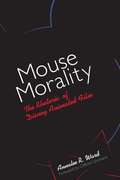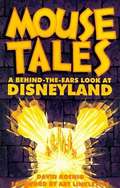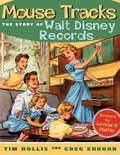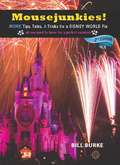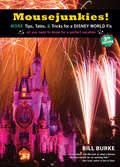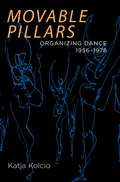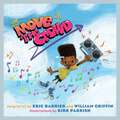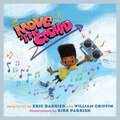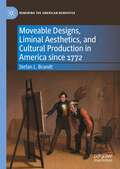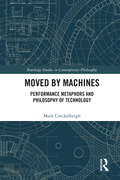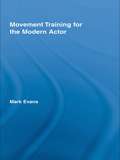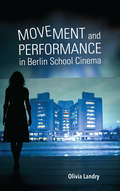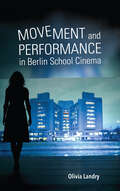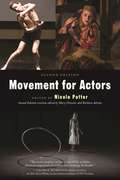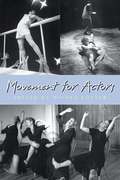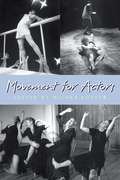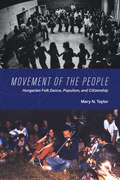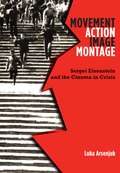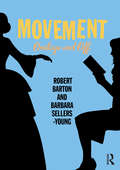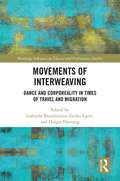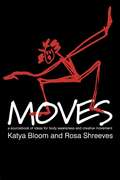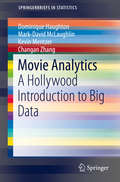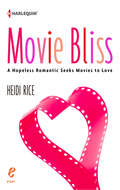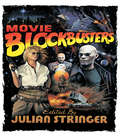- Table View
- List View
Mouse Morality: The Rhetoric of Disney Animated Film
by Annalee R. WardKids around the world love Disney animated films, and many of their parents trust the Disney corporation to provide wholesome, moral entertainment for their children. Yet frequent protests and even boycotts of Disney products and practices reveal a widespread unease with the sometimes mixed and inconsistent moral values espoused in Disney films as the company attempts to appeal to the largest possible audience. In this book, Annalee R. Ward uses a variety of analytical tools based in rhetorical criticism to examine the moral messages taught in five recent Disney animated films--The Lion King, Pocahontas, The Hunchback of Notre Dame, Hercules, and Mulan. Taking the films on their own terms, she uncovers the many mixed messages they purvey: for example, females can be leaders--but male leadership ought to be the norm; stereotyping is wrong--but black means evil; historical truth is valued--but only tell what one can sell, etc. Adding these messages together, Ward raises important questions about the moral ambiguity of Disney's overall worldview and demonstrates the need for parents to be discerning in letting their children learn moral values and life lessons from Disney films.
Mouse Tales: A Behind-the-Ears Look at Disneyland
by Art Linkletter David KoenigThe first unauthorized behind-the-scenes look at the Happiest Place on Earth.
Mouse Tracks: The Story of Walt Disney Records
by Greg Ehrbar Tim HollisAround the world there are grandparents, parents, and children who can still sing ditties by Tigger or Baloo the Bear or the Seven Dwarves. This staying power and global reach is in large part a testimony to the pizzazz of performers, songwriters, and other creative artists who worked with Walt Disney Records. Mouse Tracks: The Story of Walt Disney Records chronicles for the first time the fifty-year history of the Disney recording companies launched by Walt Disney and Roy Disney in the mid-1950s, when Disneyland Park, Davy Crockett, and the Mickey Mouse Club were taking the world by storm. The book provides a perspective on all-time Disney favorites and features anecdotes, reminiscences, and biographies of the artists who brought Disney magic to audio. Authors Tim Hollis and Greg Ehrbar go behind the scenes at the Walt Disney Studios and discover that in the early days Walt Disney and Roy Disney resisted going into the record business before the success of "The Ballad of Davy Crockett" ignited the in-house label. Along the way, the book traces the recording adventures of such Disney favorites as Mickey Mouse, Donald Duck, Cinderella, Bambi, Jiminy Cricket, Winnie the Pooh, and even Walt Disney himself. Mouse Tracks reveals the struggles, major successes, and occasional misfires. Included are impressions and details of teen-pop princesses Annette Funicello and Hayley Mills, the Mary Poppins phenomenon, a Disney-style "British Invasion," and a low period when sagging sales forced Walt Disney to suggest closing the division down. Complementing each chapter are brief performer biographies, reproductions of album covers and art, and facsimiles of related promotional material. Mouse Tracks is a collector's bonanza of information on this little-analyzed side of the Disney empire. Learn more about the book and the authors at www.mousetracksonline.com.
Mousejunkies!
by Bill BurkeA guidebook with a decidedly different approach, the second edition of Mousejunkies is a collection of humorous travelogues and insider how-to secrets compiled after scores of trips to Walt Disney World. The book draws on the insights of a panel of Disney fanatics - The Mousejunkies - following dozens of personal vacations, trade shows and press trips in recent years. This second edition brings everything up to date with countless new tips, tricks, and tales.Mousejunkies provides tips and travel plans told through personal accounts - something that sets it apart from all the other guides.All of the most important topics are covered: When to go, where to stay, what to do and where to eat. But readers will also learn how to indulge in an all-day chicken wing and beer football orgy at Walt Disney World, how to extract your family from Fantasmic with your sanity intact, where to catch a mid-afternoon catnap in the theme park, and even how wrong a Disney cruise can go.Mousejunkies is more than one travel writer's experiences at one of the most popular vacation destinations in the world. The Mousejunkies are a group of seemingly well-adjusted adults who have found themselves inexplicably drawn to Walt Disney World, again and again. Each has taken his or her own path, finding their way separately. When the smoke cleared, the group found itself back in reality, staring at one another over a pile of discarded annual passes and a useless collection of novelty hats.The stories - wry, humorous and told with an affection gained through years of Disney addiction - paint vivid portraits of a creatively engineered world, where unexpected surprises create lasting memories.The tips - valuable information designed to help readers get more out of their vacations - are told with a sly wink and the desire to share the secrets that make trips to central Florida more memorable.From touring plans to tongue-in-cheek reviews of the theme parks' restrooms, Mousejunkies provides readers with useful information couched in obsessively-detailed narrative with a humorous touch.
Mousejunkies!
by Bill BurkeA guidebook with a decidedly different approach, "Mousejunkies! 3rd Edition” is a collection of humorous travelogues and insider how-to secrets compiled after scores of trips to Walt Disney World. The book draws on the insights of a panel of Disney fanatics -- The Mousejunkies -- following dozens of personal vacations, trade shows and press trips in recent years. This third edition brings everything up to date with countless new tips, tricks, and tales. "Mousejunkies!” provides tips and travel plans told through personal accounts - something that sets it apart from all the other guides. All of the most important topics are covered: When to go, where to stay, what to do and where to eat. But readers will also learn Zen and the art of not melting down under the Florida sun, how to extract your family from Fantasmic with your sanity intact, where to catch a mid-afternoon catnap in the theme parks, and even how wrong things go when Epcrotch strikes. "Mousejunkies!” is more than one travel writer’s experiences at one of the most popular vacation destinations in the world. The Mousejunkies are a group of seemingly well-adjusted adults who have found themselves inexplicably drawn to Walt Disney World, again and again. Each has taken his or her own path, finding their way separately. When the smoke cleared, the group found itself back in reality, staring at one another over a pile of discarded annual passes and a useless collection of novelty hats. The stories - wry, humorous and told with an affection gained through years of Disney addiction - paint vivid portraits of a creatively engineered world, where unexpected surprises create lasting memories. The tips - valuable information designed to help readers get more out of their vacations - are told with a sly wink and the desire to share the secrets that make trips to central Florida more memorable. From touring plans to tongue-in-cheek reviews of the theme parks’ restrooms, "Mousejunkies!” provides readers with useful information couched in obsessively-detailed narrative with a humorous touch.
Movable Pillars: Organizing Dance, 1956–1978
by Katja KolcioMovable Pillars traces the development of dance as scholarly inquiry over the course of the 20th century, and describes the social-political factors that facilitated a surge of interest in dance research in the period following World War II. This surge was reflected in the emergence of six key dance organizations: the American Dance Guild, the Congress on Research in Dance, the American Dance Therapy Association, the American College Dance Festival Association, the Dance Critics Association, and the Society of Dance History Scholars. Kolcio argues that their founding between the years 1956 and 1978 marked a new period of collective action in dance and is directly related to the inclusion of moving bodies in scholarly research and the ways in which dance studies interfaces with other fields such as feminist studies, critical research methods, and emancipatory education. An impeccable work of archival scholarship and interpretive history, Movable Pillars features nineteen interviews with dance luminaries who were intimately involved in the early years of each group. This is the first book to focus on the founding of these professional organizations and constitutes a major contribution to the understanding of the development of dance in American higher education.
Move On: Adventures in the Real World
by Linda EllerbeeEllerbee gives details on how she moved from working with ABC to CNN.
Move the Crowd: A Children's Picture Book (LyricPop #0)
by Eric Barrier William GriffinInnovative illustrator Kirk Parrish brings the iconic song "Move the Crowd" to life for the first time as a children's picture book. With knowledge of self, there's nothing I can't solve At 360 degrees I revolve This is actual fact, i
Move the Crowd: A Children's Picture Book (LyricPop)
by Eric Barrier William GriffinInnovative illustrator Kirk Parrish brings the iconic song “Move the Crowd” to life for the first time as a children’s picture book. “'Move The Crowd' as a children’s picture book is truly as wondrous as it sounds.” —Exclusive Magazine "With knowledge of self, there’s nothing I can’t solve At 360 degrees I revolve This is actual fact, it’s not an act, it’s been proven Indeed and I proceed to make the crowd keep moving . . ." Innovative illustrator Kirk Parrish brings the iconic song “Move the Crowd” to life for the first time as a children’s picture book. The lyrics to Eric B. and Rakim’s hit song provide the inspiration for this instant classic. Follow along as Parrish pairs the lyrics with colorful illustrations about a boy being absorbed into his stereo and dropped into a colorless world where the music is dull and the people uninspired. The ensuing transformation he brings to the crowd with his music is one that the whole family can enjoy together.
Moveable Designs, Liminal Aesthetics, and Cultural Production in America since 1772 (Renewing the American Narrative)
by Stefan L. BrandtThe book explores the liminal aesthetics of U.S. cultural and literary practice. Interrogating the notion of a presumptive unity of the American experience, Moveable Designs argues that inner conflict, divisiveness, and contradiction are integral to the nation’s cultural designs, themes, and motifs. The study suggests that U.S. literary and cultural practice is permeated by ‘moveable designs’—flexible, yet constant features of hegemonial practice that constitute an integral element of American national self-fashioning. The naturally pervasive liminality of U.S. cultural production is the key to understanding the resilience of American culture. Moveable Designs looks at artistic expressions across various media types (literature, paintings, film, television), seeking to illuminate critical phases of U.S. American literature and culture—from the revolutionary years to the movements of romanticism, realism, and modernism, up to the postmodern era. It combines a wide array of approaches, from cultural history and social anthropology to phenomenology. Connecting an analysis of literary and cultural texts with approaches from design theory, the book proposes a new way of understanding American culture as design. It is one of the unique characteristics of American culture that it creates—or, rather, designs—potency out of its inner conflicts and apparent disunities. That which we describe as an identifiable ‘American identity’ is actually the product of highly vulnerable, alternating processes of dissolution and self-affirmation.
Moved by Machines: Performance Metaphors and Philosophy of Technology (Routledge Studies in Contemporary Philosophy)
by Mark CoeckelberghGiven the rapid development of new technologies such as smart devices, robots, and artificial intelligence and their impact on the lives of people and on society, it is important and urgent to construct conceptual frameworks that help us to understand and evaluate them. Benefiting from tendencies towards a performative turn in the humanities and social sciences, drawing on thinking about the performing arts, and responding to gaps in contemporary artefact-oriented philosophy of technology, this book moves thinking about technology forward by using performance as a metaphor to understand and evaluate what we do with technology and what technology does with us. Focusing on the themes of knowledge/experience, agency, and power, and discussing some pertinent ethical issues such as deception, the narrative of the book moves through a number of performance practices: dance, theatre, music, stage magic, and (perhaps surprisingly) philosophy. These are used as sources for metaphors to think about technology—in particular contemporary devices and machines—and as interfaces to bring in various theories that are not usually employed in philosophy of technology. The result is a sequence of gestures and movements towards a performance-oriented conceptual framework for a thinking about technology which, liberated from the static, vision-centred, and dualistic metaphors offered by traditional philosophy, can do more justice to the phenomenology of our daily embodied, social, kinetic, temporal, and narrative performances with technology, our technoperformances. This book will appeal to scholars of philosophy of technology and performance studies who are interested in reconceptualizing the roles and impact of modern technology.
Movement Training for the Modern Actor (Routledge Advances in Theatre & Performance Studies)
by Mark EvansThis book is the first critical analysis of the key principles and practices informing the movement training of actors in the modern era. Focusing on the cultural history of modern movement training for actors, Evans traces the development of the ‘neutral’ body as a significant area of practice within drama school training and the relationship between movement pedagogy and the operation of discipline and power in shaping the professional identity of the actor. The volume looks in detail at the influence of the leading figures in movement training — Laban, Alexander, Copeau and Lecoq — on twentieth century professional actor training, and is informed by interviews with students and staff at leading English drama schools. Mark Evans re-evaluates the significance of movement training in the professional drama school, offering a new understanding of the body as a site for performative resistance to industrialization. Despite the publication of a number of ‘how to’ books on movement training for the professional acting student, this is the first text to look behind the curtain and write the unseen biography of the actor’s body.
Movement and Performance in Berlin School Cinema (New Directions in National Cinemas)
by Olivia LandryThrough a study of the contemporary German film movement the Berlin School, Olivia Landry examines how narrative film has responded to our highly digitalized and mediatized age, not with a focus on stasis and realism, but by turning back to movement, spectacle, and performance. She argues that a preoccupation with presence, liveness, and affect—all of which are viewed as critical components of live performance—can be found in many of the films of the Berlin School. Challenging the perception that the Berlin School is a sheer adherent of "slow cinema," Landry closely analyzes the use of movement, dynamism, presence, and speed in a broad selection of films to show how filmmakers such as Christian Petzold, Angela Schanelec, Thomas Arslan, and Christoph Hochhäusler invoke the pulse of the kinesthetic and the tangibly affective. Her analysis draws on an array of film theories from early materialism to body theories, phenomenology, and contemporary affect theories. Arguing that these theories readily and energetically forge a path from film to performance, Landry traces a trajectory between the two through which live experience, presence, spectacle, intersubjectivity, and the body in motion emerge and powerfully intersect. Ultimately, Movement and Performance in Berlin School Cinema expands the methodological and disciplinary boundaries of film studies by offering new ways of articulating and understanding movement in cinema.
Movement and Performance in Berlin School Cinema (New Directions in National Cinemas)
by Olivia Landry“A rich and welcome addition to the surge of scholarly interest in the Berlin School.” —Studies in European CinemaThrough a study of the contemporary German film movement the Berlin School, Olivia Landry examines how narrative film has responded to our highly digitalized and mediatized age, not with a focus on stasis and realism, but by turning back to movement, spectacle, and performance.She argues that a preoccupation with presence, liveness, and affect—all of which are viewed as critical components of live performance—can be found in many of the films of the Berlin School. Challenging the perception that the Berlin School is a sheer adherent of “slow cinema,” Landry closely analyzes the use of movement, dynamism, presence, and speed in a broad selection of films to show how filmmakers such as Christian Petzold, Angela Schanelec, Thomas Arslan, and Christoph Hochhäusler invoke the pulse of the kinesthetic and the tangibly affective. Her analysis draws on an array of film theories from early materialism to body theories, phenomenology, and contemporary affect theories. Arguing that these theories readily and energetically forge a path from film to performance, Landry traces a trajectory between the two through which live experience, presence, spectacle, intersubjectivity, and the body in motion emerge and powerfully intersect. Ultimately, Movement and Performance in Berlin School Cinema expands the methodological and disciplinary boundaries of film studies by offering new ways of articulating and understanding movement in cinema.
Movement for Actors
by Barbara Adrian Nicole Potter Mary FleischerIn this updated rich resource for actors, renowned movement teachers and directors reveal the physical skills needed for the stage and the screen. Readers will gain remarkable insights into the physical skills and techniques used in a wide variety of performance styles through ready-to-use exercises and approaches. Included in this new edition are chapters covering:Stage combatYoga for actorsMartial artsBody-mind centeringAuthentic movementBartenieff fundamentalsGrotowski-based movementThose who want to pursue serious training will be able to consult the appendix for listings of the best teachers and schools in the country. This inspiring collection is a must-read for all actors, directors, and teachers of theater looking for stimulation and new approaches.Allworth Press, an imprint of Skyhorse Publishing, publishes a broad range of books on the visual and performing arts, with emphasis on the business of art. Our titles cover subjects such as graphic design, theater, branding, fine art, photography, interior design, writing, acting, film, how to start careers, business and legal forms, business practices, and more. While we don't aspire to publish a New York Times bestseller or a national bestseller, we are deeply committed to quality books that help creative professionals succeed and thrive. We often publish in areas overlooked by other publishers and welcome the author whose expertise can help our audience of readers.
Movement for Actors
by Nicole PotterTeachers and practitioners offer actors, directors, and students both practical suggestions and inspiration on how to tell the story through the body. Body basics, beyond glove and fan, and schools of thought are among the themes.
Movement for Actors
by Nicole PotterIn this rich resource for American actors, renowned movement teachers and directors reveal the physical skills needed for the stage and screen. Experts in a wide array of disciplines provide remarkable insight into the Alexander technique, the use of psychological gesture, period movement, the work of Rudolph Laban, postmodern choreography, and Suzuki training, to name but a few. Those who want to pursue serious training will be able to consult the appendix for listings of the best teachers and schools in the country. This inspiring collection is a must read for all actors, directors, and teachers of theater looking for stimulation and new approaches.
Movement of the People: Hungarian Folk Dance, Populism, and Citizenship
by Mary N. TaylorSince 1990, thousands of Hungarians have vacationed at summer camps devoted to Hungarian folk dance in the Transylvanian villages of neighboring Romania. This folk tourism and connected everyday practices of folk dance revival take place against the backdrop of an increasingly nationalist political environment in Hungary. In Movement of the People, Mary N. Taylor takes readers inside the folk revival movement known as dancehouse (táncház) that sustains myriad events where folk dance is central and championed by international enthusiasts and UNESCO. Contextualizing táncház in a deeper history of populism and nationalism, Taylor examines the movement's emergence in 1970s socialist institutions, its transformation through the postsocialist period, and its recent recognition by UNESCO as a best practice of heritage preservation. Approaching the populist and popular practices of folk revival as a form of national cultivation, Movement of the People interrogates the everyday practices, relationships, institutional contexts, and ideologies that contribute to the making of Hungary's future, as well as its past.
Movement, Action, Image, Montage: Sergei Eisenstein and the Cinema in Crisis
by Luka ArsenjukA major new study of Sergei Eisenstein delivers fresh, in-depth analyses of the iconic filmmaker&’s body of work What can we still learn from Sergei Eisenstein? Long valorized as the essential filmmaker of the Russian Revolution and celebrated for his indispensable contributions to cinematic technique, Eisenstein&’s relevance to contemporary culture is far from exhausted. In Movement, Action, Image, Montage, Luka Arsenjuk considers the auteur as a filmmaker and a theorist, drawing on philosophers such as Georg Wilhelm Friedrich Hegel and Gilles Deleuze—as well as Eisenstein&’s own untranslated texts—to reframe the way we think about the great director and his legacy.Focusing on Eisenstein&’s unique treatment of the foundational concepts of cinema—movement, action, image, and montage—Arsenjuk invests each aspect of the auteur&’s art with new significance for the twenty-first century. Eisenstein&’s work and thought, he argues, belong as much to the future as the past, and both can offer novel contributions to long-standing cinematic questions and debates.Movement, Action, Image, Montage brings new elements of Eisenstein&’s output into academic consideration, by means ranging from sustained and comprehensive theorization of Eisenstein&’s practice as a graphic artist to purposeful engagement with his recently published, unfinished book Method, still unavailable in English translation. This tour de force offers new and significant insights on Eisenstein&’s oeuvre—the films, the art, and the theory—and is a landmark work on an essential filmmaker.
Movement: Onstage and Off
by Robert Barton Barbara Sellers-YoungMovement: Onstage and Off is the complete guide for actors to the most effective techniques for developing a fully expressive body. It is a comprehensive compilation of established fundamentals, a handbook for movement centered personal growth and a guide to helping actors and teachers make informed decisions for advanced study. This book includes: fundamental healing/conditioning processes essential techniques required for versatile performance specialized skills various training approaches and ways to frame the actor’s movement training. Using imitation exercises to sharpen awareness, accessible language and adaptable material for solo and group work, the authors aim to empower actors of all levels to unleash their extraordinary potential.
Movements of Interweaving: Dance and Corporeality in Times of Travel and Migration (Routledge Advances in Theatre & Performance Studies)
by Gabriele Brandstetter Gerko Egert Holger HartungMovements of Interweaving is a rich collection of essays exploring the concept of interweaving performance cultures in the realms of movement, dance, and corporeality. Focusing on dance performances as well as on scenarios of cultural movements on a global scale, it not only challenges the concept of intercultural dance performances, but through its innovative approach also calls attention to the specific qualities of "interweaving" as a form of movement itself. Divided into four sections, this volume features an international team of scholars together developing a new critical perspective on the cultural practices of movement, travel and migration in and beyond dance.
Moves: A Sourcebook of Ideas for Body Awareness and Creative Movement
by Katya Bloom Rosa ShreevesFirst Published in 1998. The aim of this book is to reawaken awareness of the body feels; rekindle imagination; provide starting points for both developing greater self-awareness and creating expressive movement. 'Moves' suggests a wealth of exercises which stem from the natural movement of the body and are therefore accessible to anyone. As you respond to the material in this book you may notice changes in yourself, such as greater physical and emotional freedom, a lessening of anxiety and constriction, a new found sense of flow, flexibility and strength and a greater responsiveness to others and to the environment.
Movie Analytics
by Dominique Haughton Mark-David Mclaughlin Kevin Mentzer Changan ZhangMovies will never be the same after you learn how to analyze movie data, including key data mining, text mining and social network analytics concepts. These techniques may then be used in endless other contexts. In the movie application, this topic opens a lively discussion on the current developments in big data from a data science perspective. This book is geared to applied researchers and practitioners and is meant to be practical. The reader will take a hands-on approach, running text mining and social network analyses with software packages covered in the book. These include R, SAS, Knime, Pajek and Gephi. The nitty-gritty of how to build datasets needed for the various analyses will be discussed as well. This includes how to extract suitable Twitter data and create a co-starring network from the IMDB database given memory constraints. The authors also guide the reader through an analysis of movie attendance data via a realistic dataset from France.
Movie Bliss: A Hopeless Romantic Seeks Movies to Love
by Heidi RiceThe Romance Lover's Guide to Movie Must-Sees. If you adore Sleepless in Seattle and Pride and Prejudice and The Avengers, then you want a movie guide aimed at women like you. Women who enjoy romances and more! You like both a good kiss and a good knockout and refuse to be categorized-but you wish someone like you would recommend movies.Which brings Harlequin author and professional movie critic Heidi Rice to the rescue. Whether it's nonstop action with a little heart 'n' soul, sweetly adorable cartoons, a classic black-and-white screwball comedy or that under-the-radar flick that you never knew you were missing, Heidi Rice will lead you through her must-sees and why you will also enjoy them. From Ryan Gosling's six-pack to that iconic orgasm sandwich delivered by Meg Ryan, right up to the double whammy of hotties in Prisoners (Gyllenhaal and Jackman)-there's a little something for everyone.And a little something for that teenager inside you who's ready to watch "nekkid" man-candy and spend two hours falling in love all over again....
Movie Blockbusters
by Julian StringerBig-budget, spectacular films designed to appeal to a mass audience: is this what - or all - blockbusters are? Movie Blockbusters brings together writings from key film scholars, including Douglas Gomery, Peter Kramer, Jon Lewis and Steve Neale, to address the work of notable blockbuster auteurs such as Steven Spielberg and James Cameron, discuss key movies such as Star Wars and Titanic, and consider the context in which blockbusters are produced and consumed, including what the rise of the blockbuster says about the Hollywood film industry, how blockbusters are marketed and exhibited, and who goes to see them. The book also considers the movie scene outside Hollywood, discussing blockbusters made in Bollywood, China, South Korea, New Zealand and Argentina
